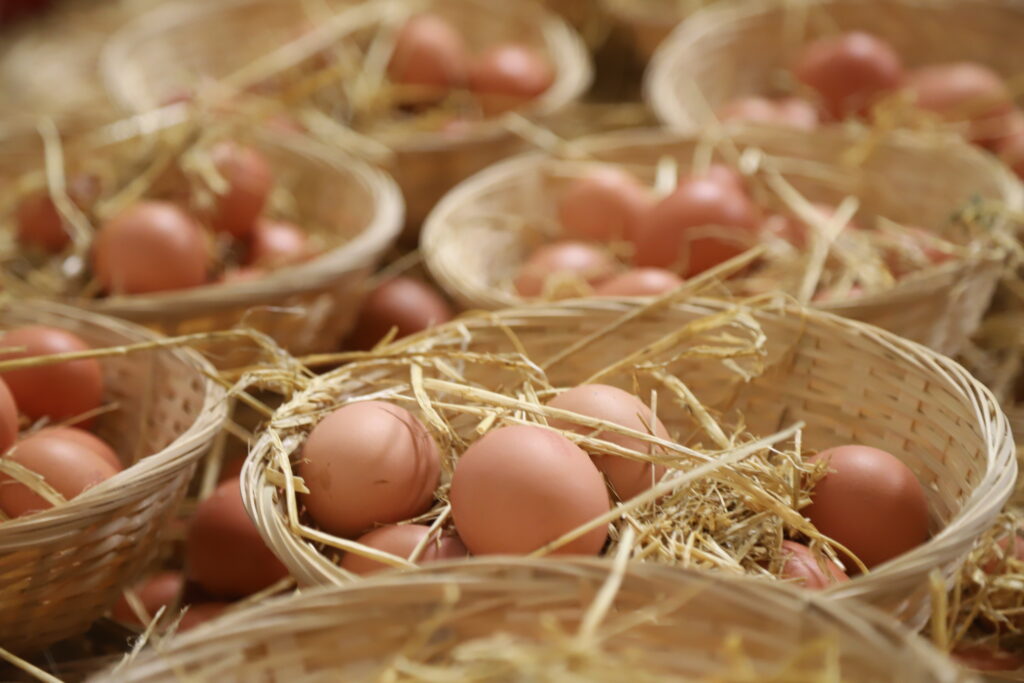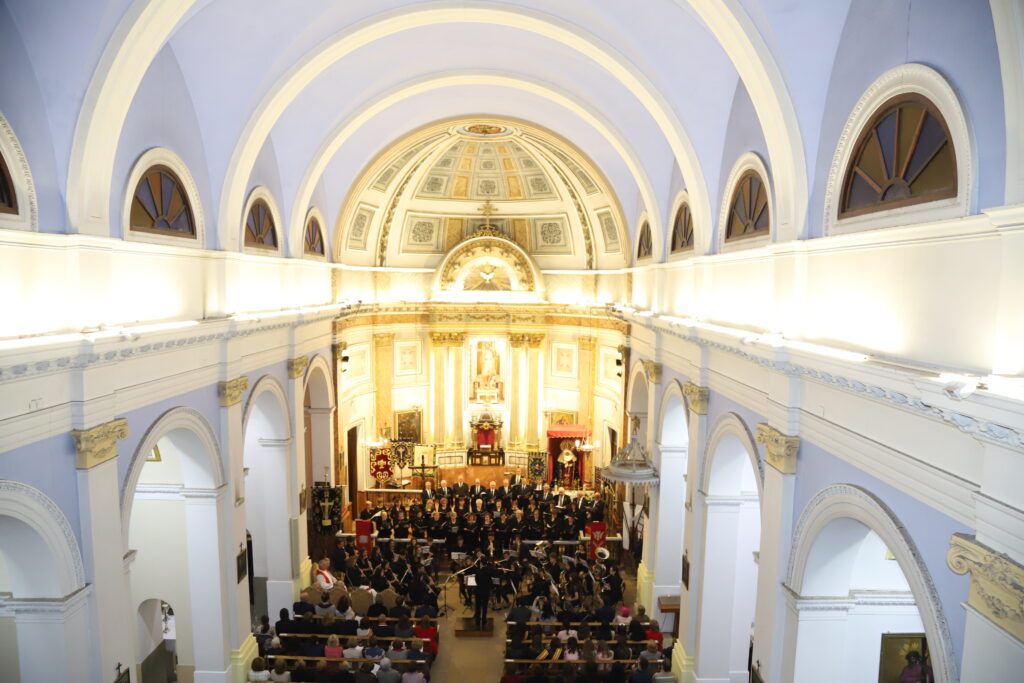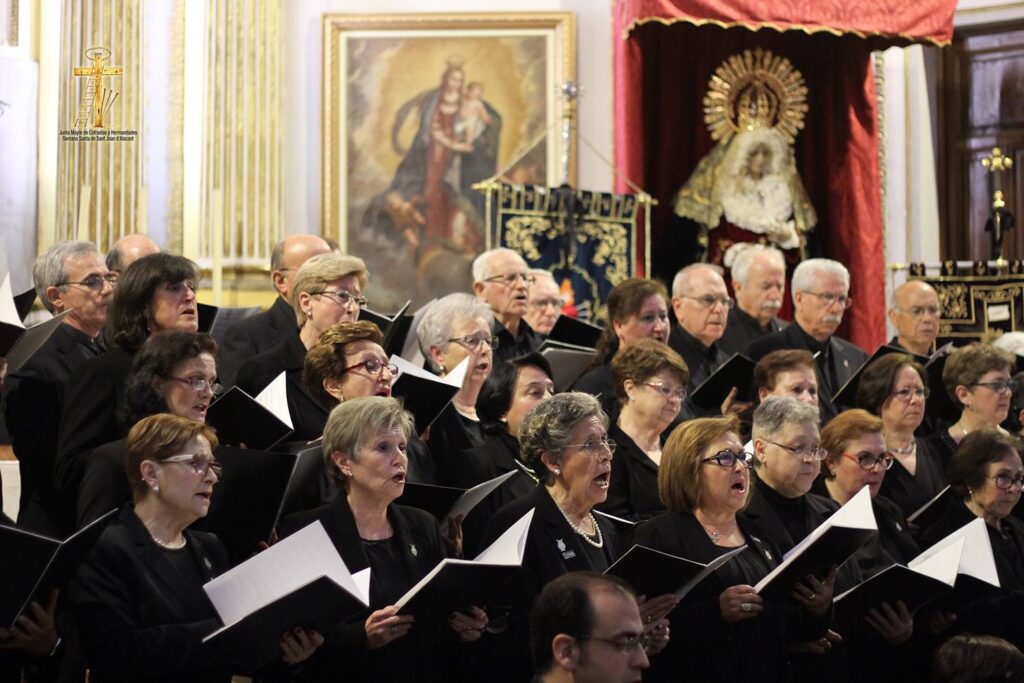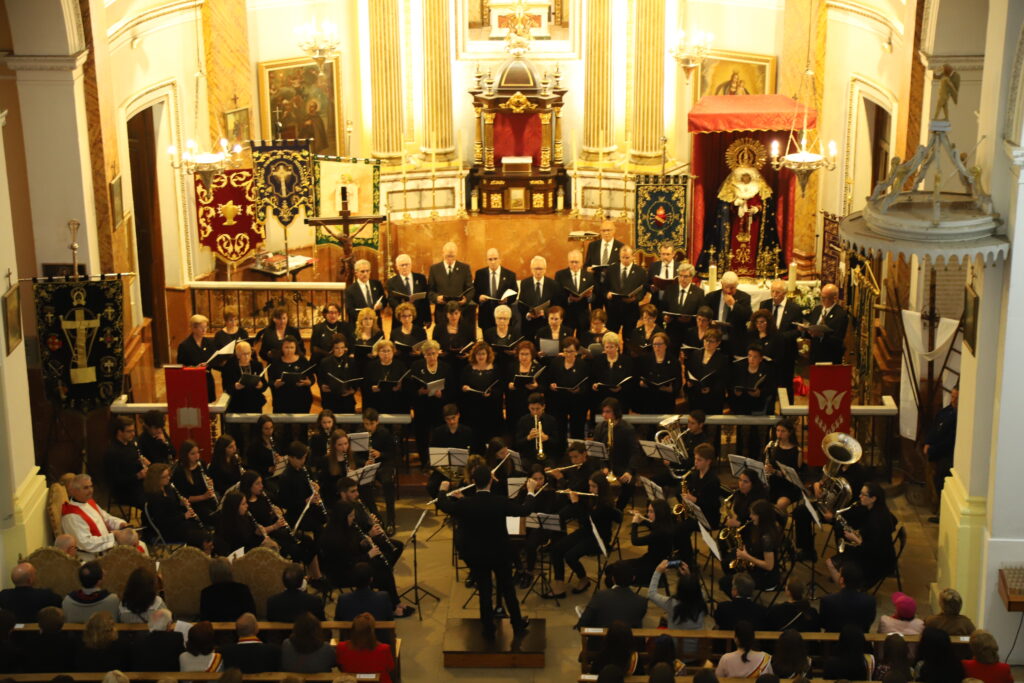The Song of Sorrows
The Song of the Seven Sorrows of the Virgin is a polyphonic musical work, which the Basque maestro D. Juan María Goñi López de Munaín composed in Sant Joan in 1883, and which more than 130 years later is still sung in the Church of San Juan Bautista On Saturday of Passion, as an official beginning of the Santjoanera Holy Week. This prayer of simple harmonies combines the religious part with the historical and cultural part, since, over the years, it has become the most important legacy of the religious and popular music of Sant Joan.
Every Passion Saturday, hours before Palm Sunday, the Greater Board of Brotherhoods and Brotherhoods invites the singers of the Orfeón San Juan and the instrumentalists of the La Paz Musical Society to the Song of Sorrows (in recent years a group has performed of students from the Professional Conservatory of Music ‘Villa de Sant Joan’). Nearly a hundred performers, who each year are directed by a musician or conductor invited by the Mayor Board, who offers the possibility of participating in the direction of this prayer to an outstanding artist.


Regardless of who the director is, what does not change is that the Dolores will be performed before the entire town, and that as has been traditional, for more than a hundred years, the ‘salary’ that will be paid to the musicians is a dozen of eggs. Of course, the priests carry two dozen.
The data about the first representation of the Song of Sorrows date back to the end of the 19th century. Originally they were sung ‘a cappella’ and it is not certain that any instrument or instrumental group, for which the scores had been lost, accompanied the voices, specifically, by low voices. Through information from the Parish Archive, the image of the Virgin of Sorrows has been venerated in our church since 1830, which would suggest the increase in devotion to the tradition of Los Dolores. We know in the town two different compositions made by the teachers Mr. Francisco Senante Laudes and Mr. Juan María Goñi López (1822-1884). Maestro Senante’s composition is probably older, but the one that is currently performed is that of maestro Goñi, a Basque composer, born in Salvatierra (Álava) who lived in Sant Joan during the final years of his life and was director of the Band. Musical de Sant Joan from 1877 until his death (he died precisely in 1884, possibly shortly after premiering the Song of Sorrows in 1883).


Therefore, the Sorrows were performed from its creation until the seventies, with the exception of the years of the Civil War, during Passion Week, prior to Holy Week. In the 70s they stopped ringing, but in 1994 the Board of Brotherhoods promoted its recovery by collecting the testimony of some people such as Ms. Dolores Caturla Antón or D. Antonio Climent Ferrándiz, thanks to whom the vocal part could be recovered. The latter, then director of the music band, created the new instrumentation based on the original according to memories and old scores. Los Dolores sounded again on March 22, 1997, Passion Saturday, in the Parish Church with the participation of the Orfeón San Juan and the La Paz Musical Society. In 2002, the former director of the Orfeón San Juan, Alberto Alcaraz Pastor, made the adaptation for four mixed voices and a band, which is how they are currently performed by the Orfeón itself and a section of the La Paz Musical Society.
Did you know that...?
Popular devotion to the Sorrows of the Virgin began throughout Christendom around the Middle Ages. As part of the devotion, some associated songs appeared that were performed during Lent and Holy Week, along with the rest of the pious and devotional acts, such as the cults and processions with the images of the Passion. In the old Kingdom of Valencia, some data place these songs in the 16th century. The work, originally, presented characteristics very similar to those of other ‘Dolores’ to the Virgin, framed in the popular European Marian tradition, closely related to the Via Crucis, and whose origin is found in the late Middle Ages. With a predominantly homophonic structure, with simple harmonies, full of lyricism and described in a minor key, the elements of each season (pain) are described in the Bible (Gospels) following the most dramatic moments in Mary’s life. The Seven Sorrows of the Virgin Mary are based on biblical episodes from the Gospels: the prophecy to Simeon, the flight to Egypt, the loss of Jesus in the temple, the encounter with Jesus on the way to Calvary, Mary at the foot of the Cross, the death of Jesus and the burial of Christ.
